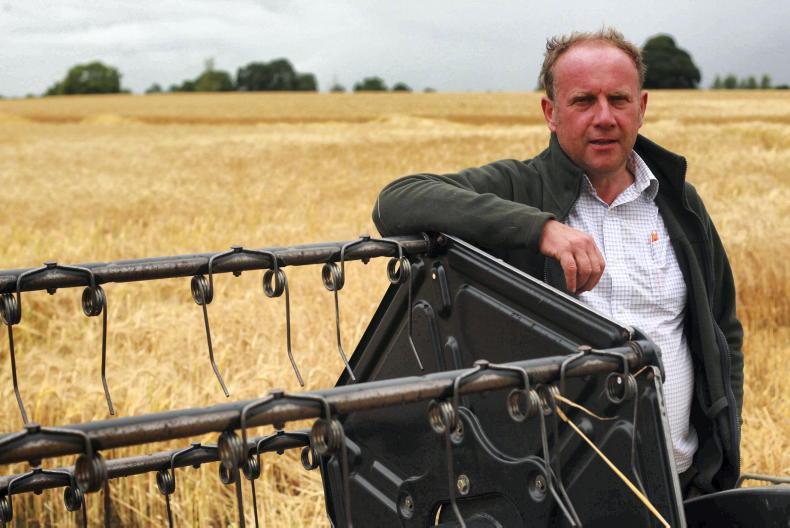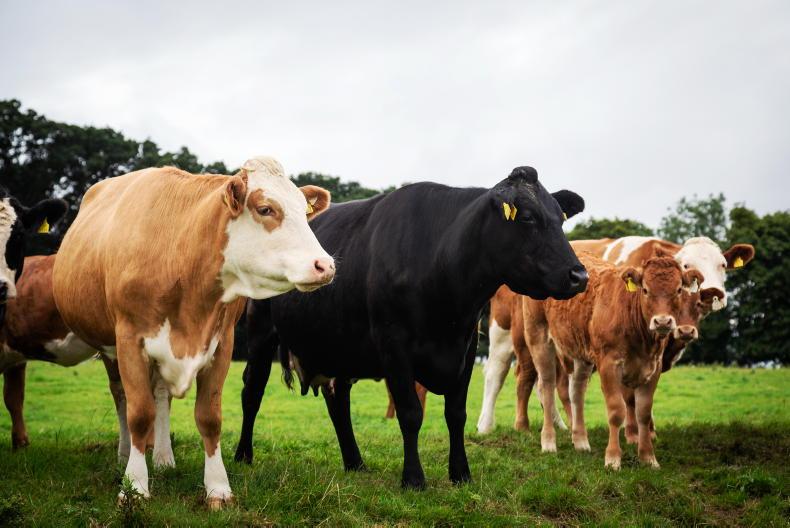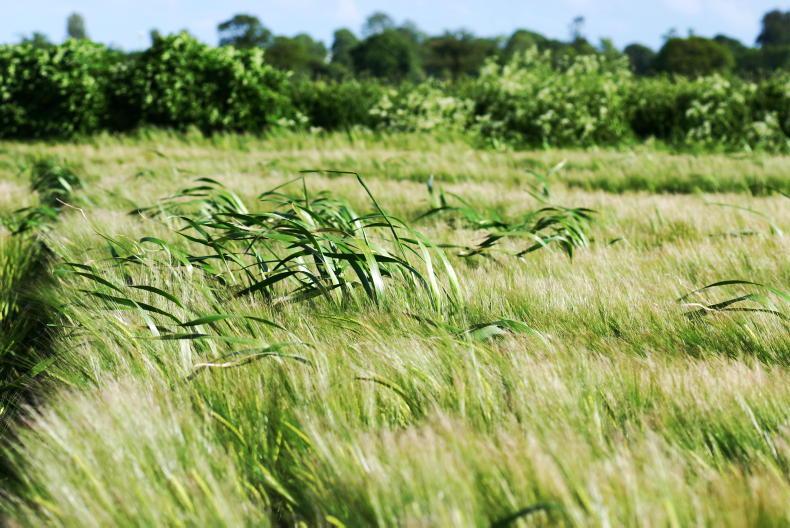The first two days combining the spring barley at the end of August were blissful. The sun was shining and the wind was blowing and moistures fell to under 16%. The average yield was good at 3.1t/ac with large swathes of precious golden straw.
Good old spring barley, I thought to myself from the combine seat, it’s an unlikely saviour but it will be the crop of the harvest.
With no bare – or even thin – patches, and much cheaper to grow than winter crops and great for brome control, what’s not to like? And while daily output was much lower than in wheat, it was pleasant to cut. Happy days indeed.
Linseed and barley
The third day, a Sunday, was dull and calm but no rain. No matter, we’d work away and soon finish the late April-sown crops with just one May-sown field remaining.
Alas, the field I’d opened up the previous evening wasn’t now so pleasant to combine. In fact, it was an absolute b*****d to cut. Yes, the crop was thick and tousled, as they all were, but it refused to flow into the header. The dividers were bulldozing and it was impossible to cut. The straw did feel a little damp and all because the sun wasn’t shining.
Now, they used to say when combining the notorious linseed if a hedgerow tree casts a shadow on the crop, you have to cut around the shadow. Linseed’s impossible to cut if it’s not in full sun. Barley is little different. It can be a pleasure to cut or a pig.
For this reason, late sown barley is a risky crop. Good bright drying days can certainly happen in September but they are less likely. With that said, we’ve had a few beautiful early autumn days recently but combining days are short with heavy dews.
Spring oats are better in this regard. Provided you keep them standing, they’re better suited to late season harvesting.
Yet for all of that, if we can sow spring barley in early April, it’s an attractive crop. Modern plant breeding has been good to barley (unlike wheat) with desirable plant characteristics and very good yield potential. The variety Skyway is a case in point and suits our land well.
And the PGR Medax Max did indeed do a super job keeping the oats short and standing. This was very evident in that unsprayed areas around poles were flat. The yield again was very satisfactory at 3.30t/ac.
That’s the spring corn finito and it’s much more pleasing than the patchy 3.5t/ac winter wheat.
So, after all the soul searching and worries about the crops we planted – or failed to plant – last autumn, and indeed the late spring, nature compensated in the end. Yes, our grain sales will be well down on a normal year but we’ll survive.
Winter crops
Equally, I made the wrong decision on three patchy winter crops that should have been taken out and re-sown, as we did others. But who was to know spring crops would be as pleasing?
I’m not sure what the lesson is in all of this but perhaps it is not to panic if the autumn is wet. But it has to be said, the cool and essentially dry summer suited spring crops. The beans remain for a showdown in October – they’ve only begun to senesce in the last week.
Finally, our 2017 Claas 670TT combine never missed a beat and I’ll keep it for another few years. But on the other hand, new combines have suddenly become great value. After all, I could change to a brand spanking new Claas 6700TT for just the price of a decent bike shed – with cash back.










SHARING OPTIONS